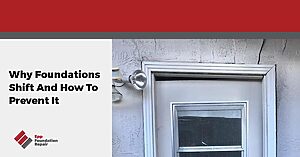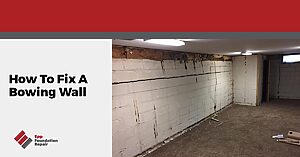Are you looking for information about different types of ceiling cracks with pictures? If so, don’t hit that back button! This article has what you need.
Contrary to what many people believe, not all ceiling cracks threaten your home’s structural integrity. Some are just ugly. However, certain types of ceiling cracks are structurally significant and could even be dangerous.
Whether a ceiling crack is structurally significant or not – depends on the crack’s location, size, and type. The good news is that even structurally significant cracks can usually be repaired.
Types of ceiling cracks with pictures
Hairline ceiling cracks
Hairline cracks on the ceiling that are less than 1/16 inch in width usually aren’t a cause for concern. They’re simply unsightly and often caused by paint build-up or plaster expanding and shrinking due to fluctuating humidity levels. They’re usually nothing to worry about because the cracks are a cosmetic rather than a structural issue.
Straight ceiling cracks in drywall
Straight “cracks” in drywall are also harmless because they’re not technically cracks. They’re simply the drywall tape pulling away. Drywall tape is used – along with drywall mud – to seal the straight edges where two sheets of drywall come together. When an insufficient amount of drywall mud is used to seal the tape, the drywall tape eventually pulls away and causes “cracks.”
Discolored ceiling cracks
A discolored ceiling crack usually means there’s water involved. Something’s leaking. Is there a bathroom on the floor above the cracked ceiling? Before fixing this type of ceiling crack, you’ll need to find and repair the leak.
Big cracks in the center of the ceiling, sometimes with sagging
Large cracks in the center of the ceiling – sometimes accompanied by sagging – are a sure sign of structural damage. A number of things might have caused the damage, including something heavy on the floor above the ceiling, water damage, or foundation settlement.
A ceiling crack that continues down a wall
A ceiling crack that continues down a wall is another sure sign of structural damage.
A crack where the wall meets the ceiling
This is really a separation rather than a crack. Unfortunately, it’s an indication the foundation has moved, which means there might be structural damage.
For more information see, Does Your Home Have Dangerous Ceiling Cracks?

Structural ceiling cracks – When to worry
You need to worry about a ceiling crack when you see the following:
- A ceiling crack that’s wider than 1/8 of an inch
- Other signs of foundation trouble (see list below)
- A ceiling crack of any size accompanied by sagging
- More than one crack, even if they’re small
- A ceiling crack that’s longer than 12 inches
- A ceiling crack that continues down a wall
In general, bigger ceiling cracks are more problematic. However, that doesn’t mean you should ignore tiny ceiling cracks. Use common sense. If a ceiling crack looks serious, it probably is. If you don’t feel safe in the house, leave and contact a foundation repair contractor for any inspection.
Causes of ceiling cracks
Ceiling cracks are caused by various things, including,
- Paint build-up – These ceiling cracks are often found in older homes. They look ugly, but they’re harmless.
- Foundation settlement – These ceiling cracks are structurally significant and need to be inspected by a foundation repair specialist right away.
- Moisture – There might be a plumbing leak above the ceiling or perhaps a problem with the roof after a major storm.
- Improperly installed drywall – If the drywall joints aren’t taped correctly, the tap could come loose and create straight ceiling cracks.
- Something heavy on the floor above the ceiling – A piano, a heavy bathtub?
What you should do if you see a ceiling crack
What you should do if you see a ceiling crack depends on the crack.
- If you see one hairline crack in the ceiling of an older house, it’s probably paint build-up and no reason to lose sleep. Still, measure the crack and monitor it for growth. If it gets bigger, call a foundation repair pro for an inspection.
- If you see a straight crack and you’ve been able to determine that it was caused by improper drywall installation, there’s no cause for concern. If you’re not sure the straight crack was caused by improper drywall taping, contact a professional foundation repair contractor for an inspection.
- If you see a wide crack, long crack, discolored crack, a crack accompanied by sagging, cracks of any size in more than one room, or any other suspicious crack, contact a foundation repair professional for an inspection.
Signs there might be a problem with your home’s foundation
If you have a suspicious ceiling crack, look around your home to see if there are other signs of a foundation problem. Here are some things to look for:
- Uneven floors – If you drop something on the floor, does it always roll toward a specific spot?
- Doors and windows that aren’t opening and closing properly
- Floor cracks – Look for cracks that go from wall to wall. A crack limited to one or two tiles was most likely caused when something fell on the floor.
- Wall cracks – Horizontal and diagonal cracks are the most problematic. However, vertical cracks can allow water to seep into your basement.
- Bowed walls – Basement walls can bow inward when hydrostatic pressure builds up in the soil.
- Moldings that are out of place – Are the moldings no longer in contact with the ceiling or wall?
- Stair step cracks in brick or masonry – This is a sure sign of foundation settlement.
- Diagonal cracks from the corners of windows and doors – If these are hairline cracks, it might not be anything to worry about. However, larger cracks are a cause for concern.
- Walls separating from the ceiling or floor – Even slight separations should be looked at by a pro.
- Porches and chimneys that are leaning away from the house – Sometimes, the foundation under the chimney or porch is a problem, but not always.
- Water in the basement – Foundation cracks might be allowing water to seep into the basement.
Also, has anything happened that might have caused foundation damage? For example, an earthquake, landslide, flood, or sinkhole activity?
While not all types of ceiling cracks are serious, some indicate structural damage and need to be immediately inspected by an experienced foundation repair contractor. Whenever you’re unsure about a ceiling crack, call a pro. If you catch a foundation problem early, you’ll save on repair costs.







